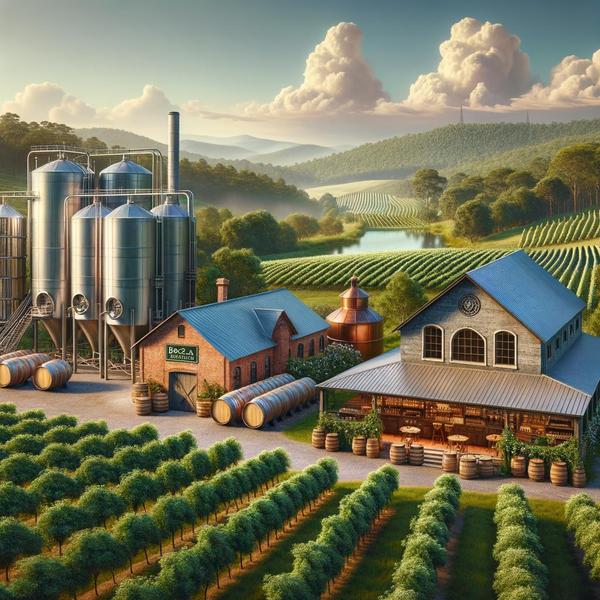Understanding Lake Lanier’s Ecosystem & Water Quality

Understanding Lake Lanier’s Ecosystem and Water Quality
Lake Lanier, located in the southeastern United States, is a crucial resource for both human and aquatic life. Understanding its ecosystem and water quality is vital for environmental conservation and sustainable usage. This article delves into Lake Lanier's diverse ecosystem, examines its water quality, and highlights the importance of maintaining its ecological balance.
The Importance of Lake Lanier
Lake Lanier is more than just a beautiful body of water; it's a pivotal element of the region's water supply, recreation, and biodiversity. This man-made lake was created to provide hydroelectricity, flood control, and water supply. However, its significance extends beyond these practical uses, serving as a habitat for numerous species and a spot for recreational activities like fishing, boating, and swimming.
A Glimpse into Lake Lanier’s Ecosystem
The ecosystem of Lake Lanier is incredibly diverse, supporting a wide array of flora and fauna. The lake's aquatic environment is home to numerous fish species, including largemouth bass, striped bass, and catfish, which thrive in its nutrient-rich waters. The surrounding areas host a variety of plants and animals that contribute to the habitat's complexity, enhancing recreational and ecological value.
Moreover, this ecosystem is part of a larger network within the Chattahoochee River system, playing a key role in supporting surrounding ecosystems. It interlinks with wetlands, forests, and other natural landscapes, which are integral to maintaining the ecological balance and biodiversity.
Examining Lake Lanier’s Water Quality
Water quality in Lake Lanier is a major concern for both environmentalists and residents. The lake's health, measured through various parameters such as pH level, dissolved oxygen, and nutrient concentration, indicates the overall ecosystem status. Currently, Lake Lanier faces challenges such as pollution, sedimentation, and nutrient loading, primarily due to urbanization, agricultural runoff, and recreational use.
Efforts are underway to monitor and manage these issues to ensure the lake's long-term viability. Government agencies, environmental groups, and local communities are collaborating to implement effective water management strategies. Initiatives include monitoring water quality, promoting conservation practices, and educating the public on responsible usage.
Human Impact on Lake Lanier
Human activities have profoundly impacted Lake Lanier, both positively and negatively. The development around the lake has led to economic growth and increased access to recreational facilities; however, it has also exacerbated pollution levels and threatened aquatic habitats. Urban expansion poses a constant challenge to maintaining Lake Lanier's ecological equilibrium.
To mitigate negative impacts, local regulations and conservation efforts are essential. By enforcing stricter controls on pollution, reducing emissions, and promoting sustainable development, the area's growth can be aligned with environmental conservation goals.
Conservation Efforts and Strategies
Conservation efforts are underway to protect and preserve Lake Lanier's ecosystem. Strategies involve both restoration and proactive measures, encompassing habitat restoration, pollution reduction, and sustainable land-use planning. Collaboration between federal, state, and local agencies is crucial in implementing effective conservation programs.
Public education plays a significant role in these efforts. By raising awareness about the lake's ecological importance and the need for conservation, communities can participate in safeguarding their natural resource. Encouraging responsible recreational activities and advocating for green practices contribute significantly to maintaining Lake Lanier's health.
Future Prospects and Challenges
Looking ahead, Lake Lanier faces both opportunities and challenges in its quest for ecological balance. Climate change, population growth, and technological advancements will continue to influence its future. Balancing human demands with environmental preservation is key to sustaining Lake Lanier's ecosystem.
Innovative solutions, such as advanced monitoring technologies and green infrastructure projects, offer promising pathways. Continued research and policy development play critical roles in adapting to evolving environmental conditions, ensuring that Lake Lanier remains a vital and thriving component of the region.
FAQs
What is the main ecological role of Lake Lanier?
Lake Lanier plays a crucial role in supporting a diverse ecosystem and providing water supply, recreation, and habitat preservation.
How does pollution affect Lake Lanier’s water quality?
Pollution leads to nutrient loading and sedimentation, affecting both water quality and the health of aquatic life.
What conservation measures are in place to protect Lake Lanier?
Conservation measures include habitat restoration, pollution reduction, and public education for sustainable usage.
How can local communities contribute to Lake Lanier's conservation?
Communities can aid conservation by participating in clean-up projects, adopting eco-friendly practices, and spreading awareness.
What challenges does Lake Lanier face in future conservation efforts?
Challenges include climate change, increased urbanization, and the need for sustainable resource management.
Categories
- All Blogs (586)
- Achasta Golf Community (76)
- Cleveland, GA (41)
- Dacula, GA (43)
- Dahlonega GA (113)
- Dawsonville, GA (44)
- Gainesville, GA (45)
- Gold Peach Realty (5)
- Helen, GA (44)
- Home Buying Tips (17)
- Home Décor And Interior Design (7)
- Home Improvement Tips (15)
- Home Selling Tips (20)
- Homes For Sale (45)
- Lake Lanier, GA (68)
- Local Events (13)
- Local Guides (17)
- Mortgage And Finance Tips (23)
- North Georgia (10)
Recent Posts










GET MORE INFORMATION

